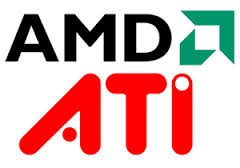
One of the earliest examples of dynamic, multidimensional physics calculations being made in a video game is, of course, Atari's Pong and its several smaller predecessors. This goes to show how deeply rooted the need for physics calculation is in interactive gaming, as Pong is widely regarded as being instrumental in the beginning of the video gaming era. The calculations made in this case are, of course, extremely rudimentary: limited, in fact, to determining the direction at which the projectile should bounce given its incoming direction based on a set of rules that only loosely emulate the actual physics involved. Speed is not even a factor, as it is independently increased over the course of a match to increase intensity and difficulty.

While this beginning is extremely humble from a physics standpoint, it is still a beginning. The bar continued to be raised with the release of the various Super Mario Bros. games (Nintendo) in the 1990s. They made some of the first use of real-world momentum calculations in video games. Building on that, what we begin to see more recently (starting in about the mid 1990s) is an increase in the amount of freedom of players – we begin seeing more 3 dimensional environments, pioneered by the likes of Super Mario 64 (Nintendo, 1996), along with less linear game play where players can move to and from different parts of the game without being tied to a linear progression of "levels". As this trend continues, even more player freedom is introduced in the form of more "open world" games, pioneered by role playing games such as the Elder Scrolls series' first installment, Arena (Bethesda Softworks, 1994) or the Final Fantasy Series' first game, Final Fantasy (Square, 1987). While neither of these games contained any need at all for physics calculations, they represent a trend toward more unscripted player interaction with the game world. This trend, when combined with personal computers' increased capacity for 3-dimensional rendering, inevitably leads to a situation where physics simulation becomes increasingly helpful, and in some cases integral.
Heading: Real time Calculations
One should note that it is perfectly possible to create great looking, cinematic visual sequences without making physics calculations on the fly: many early 3-dimensional games use pre-rendered animations of both characters and their environment to great effect. This can be thought of like any of the recent animated films you may have seen – there is no computer calculating how the wind should be making the hero's cloak billow during the movie, it was all either calculated and rendered or manually rendered during the production process, and simply recorded and played back. The reason that the trend toward unscripted player-environment interaction is so important is that it begs something more than simple pre-rendered animations. A player can only cause a wall to fall down the same way (or set of ways) so many times before they feel like they are simply part of a script again. This is where mealtime physics simulation comes in.
Hardware
Warning: hardware and computer jargon forthcoming. understanding this information is not integral to the later physics content, however
As 3D graphics became prevalent in during the 1990s, rendering them in real time began to put a heavy burden on computer processing hardware. This gradually lead to the introduction of dedicated Graphics Processing Units (GPUs) to supplement computers' over-taxed CPUs and take over graphics rendering tasks. As the use of physics in video games developed about 10 years later, the same problem arose – CPUs simply couldn't handle running all of their own calculations in addition to the intensive physics calculations required for new games. This, like the 3D graphics revolution 10 years before, lead to the development of independent hardware, notably by Ageia, who created the first (and only) standalone physics processing unit (PPU). They also licensed the now popular PhysX engine, which was used elusively with their PhysX PPUs. Unlike the 3D graphics revolution, however, several other solutions also arose.
 |
In 2007, Intel acquired Havok, a leading physics engine provider, who's physics engine was used in many physics enabled games as well as for the special effects of several movies such as The Matrix and Harry Potter. As Intel's main product was and still is the CPU, Intel made moves to ensure that the CPU still had a part in physics calculations. The company canceled Havok's "Havok FX" project, which was in the process of developing means to offload physics calculations to GPUs. |
 |
However, Nvidia Corporation, by that point one of the top GPU manufacturers in the world, acquired Ageia in 2008, giving them access to Ageia's PhysX engine and Software Development Kit (SDK). This allowed them to do what Havok was in the process of doing: move physics calculations to their GPUs. |
 |
It is worth mentioning that using the PhysX engine, or making the physics calculations required in today's gaming world, does not require hardware that is specifically made for PhysX software. ATI, Nvidia's leading competitor in GPUs, makes cards that are similarly capable and, with a little tweaking, can run the calculations required by PhysX enabled games. Also, today's increases in CPU power and Random Access Memory (RAM) availability make physics calculations more doable in CPUs. |


